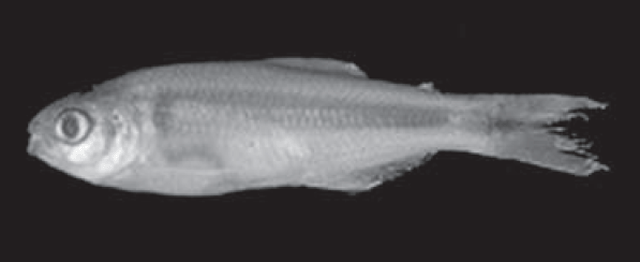| Characidae (Characins; tetras), subfamily: Stevardiinae |
| 9.382 cm SL (male/unsexed) |
|
benthopelagic; freshwater |
| South America: drainages of the Río La Plata, upper Río Magdalena Basin in Colombia. |
|
Dorsal soft rays (total): 9-10; Vertebrae: 40-41. Can be diagnosed in having the following characters: lateral line scales 39-42 (vs. 43-54; except 34-35 in Hemibrycon orcesi); scales between lateral line and anal-fin origin 6-7 (vs. 4-5; except 7-9 in Hemibrycon colombianus); and scales between lateral line and dorsal-fin origin 6-7 (vs. 8; except 7-10 in Hemibrycon colombianus). Most specimens of Hemibrycon paez differ from those of Hemibrycon boquiae, Hemibrycon yacopiae and Hemibrycon raqueliae by the possession of 19-23 anal-fin rays (vs. 23-29); readily distinguished from its congeners by having the mesopterygoid barely touching the metapterygoid (vs. overlapping the metapterygoid, except in Hemibrycon jabonero, Hemibrycon rafaelense and Hemibrycon guppyi) (Ref. 83529).
Description: Dorsal fin ii,7-8; anal fin iii-iv,20-23; pectoral fin ii,10-11; pelvic fin ii,6 (Ref. 83529). |
| Inhabits creeks with surface temperature 19.2-20.5°C, air temperature 18.8-22.8°C, dissolved oxygen 7.6-8.0mg/l, saturation 98-100%, clear water, width 5-6m, and substrate composed of stone, sand and decaying organic material (Ref. 83529). |
|
Data deficient (DD); Date assessed: 10 October 2014 Ref. (130435)
|
| harmless |
Source and more info: www.fishbase.org. For personal, classroom, and other internal use only. Not for publication.

